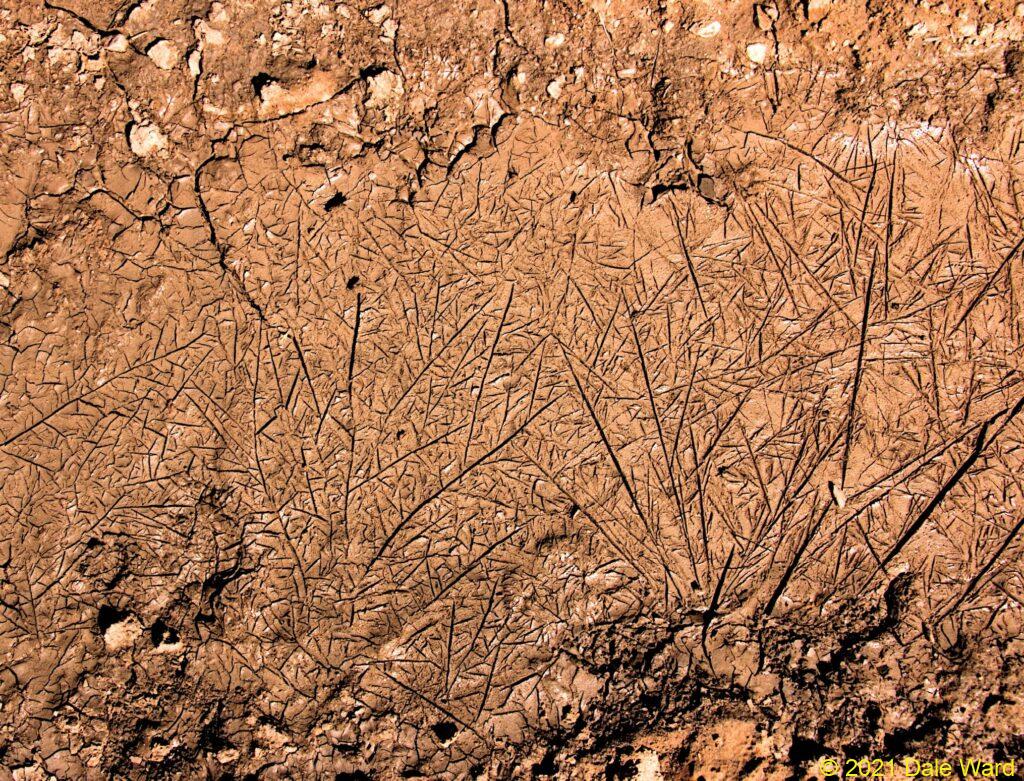Dry Tiger Salamander Tanks!
My desert Tiger Salamander tanks are dry!
 Cracks in frozen mud, near a dry Tiger Salamander cattle tank. I was interested in the way the cracks looked like frost on a window pane, with very straight lines, as though they had been incised into the mud. Not formed in the rectangular/round patterns that drying mud usually makes.
Cracks in frozen mud, near a dry Tiger Salamander cattle tank. I was interested in the way the cracks looked like frost on a window pane, with very straight lines, as though they had been incised into the mud. Not formed in the rectangular/round patterns that drying mud usually makes.
I’ve been making my rounds of the cattle tanks where I found Tiger Salamanders a couple of years ago, like the one in this post. All of the high desert tanks have been dry, even after the recent rains and snows.
I’m curious how long the Tiger Salamander populations maintain under drought conditions. They certainly don’t need enough surface water to breed every year, since these tanks are often dry. I’m guessing that the limit is the lifespan of the Salamanders themselves.
And does the intermittent breeding interrupt the life cycle of Ranavirus? I’ve read that Ranavirus survivors can be carriers. Is that the way Ranavirus could ‘jump’ drought years? Or does it rely on yearly Salamander breeding, so that the reliable pools (and thus reliable Salamander congregations) act as reservoirs of the virus?